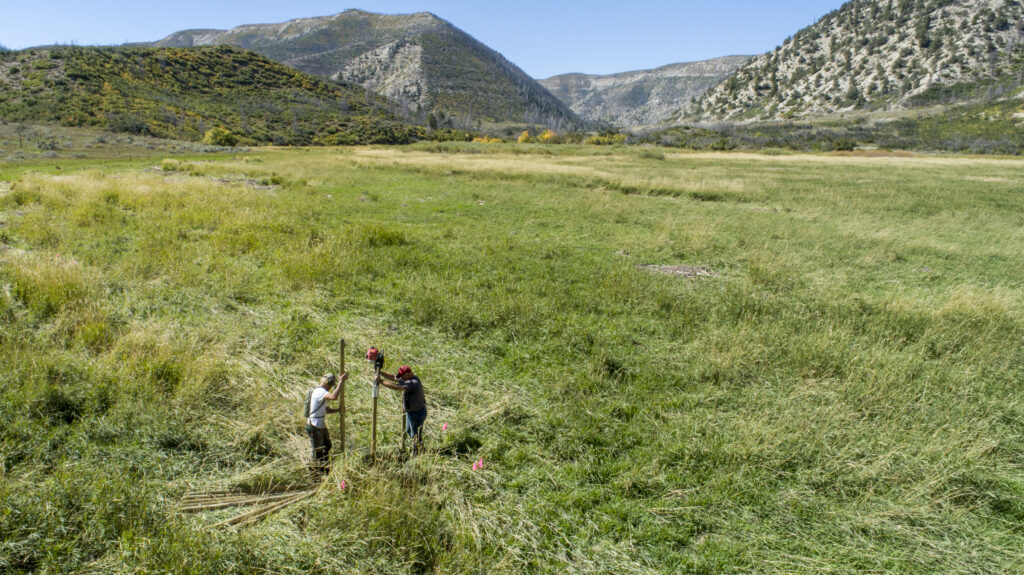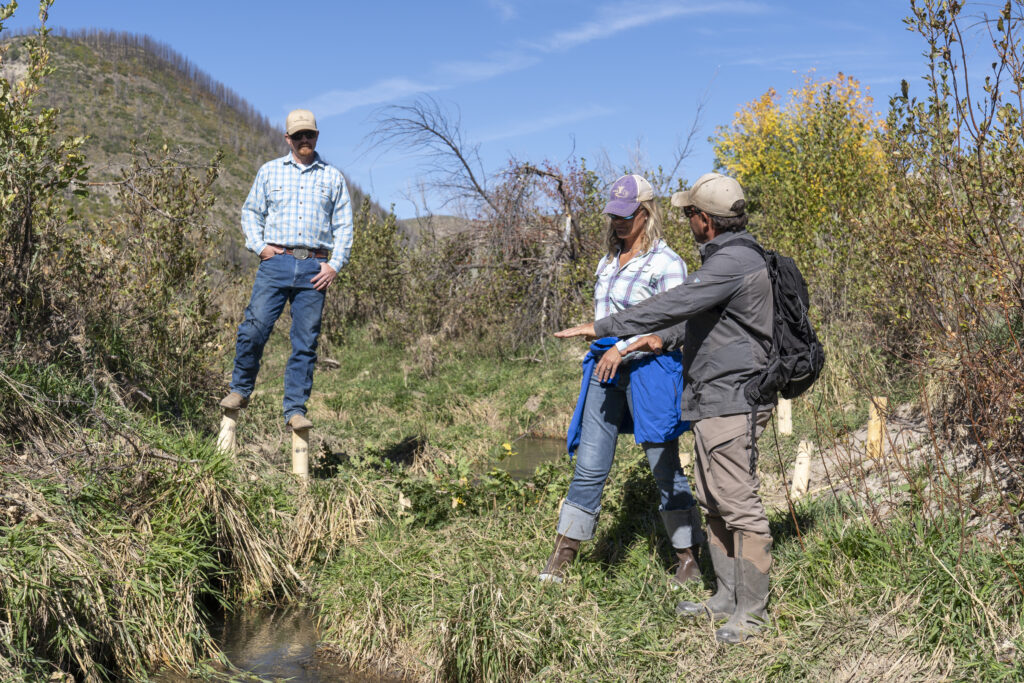The Dry Fork Creek River-Wetland Corridor Restoration is funded by the Colorado Water Conservation Board’s Colorado Watershed Restoration Program and the National Fish and Wildlife Foundation’s RESTORE Program. To carry out this project, Audubon Rockies is working with The High Lonesome Ranch to restore a 1.7 mile reach of the North Dry Fork Creek where it flows through the ranch.
The High Lonesome Ranch is located near DeBeque, Colorado. Years of mismanagement of riparian areas and wetlands from prior ranch ownership caused the North Dry Fork Creek channel to erode and deepen. This led to the creek becoming disconnected from the floodplain, harming the health and productivity of these working lands and increasing the ranch’s vulnerability to flash flooding.
Additionally, the 2020 Pine Gulch Fire devastated the ranch and adjacent Bureau of Land Management lands, causing flash floods and debris flows. These events had a devastating impact on the ranch; they wiped out roads, buried fences, and caused rapid incision of the creek, leading to decreased water quality, buried riverside habitat, and contaminated water used by cattle on the ranch.
To restore the creek and help the ranch recover from lingering fire impacts and mismanagement of riparian areas and wetland by prior ranch ownership, Audubon is installing over 150 hand built structures made of natural materials (a type of restoration work known as low-tech process-based restoration) in the stream channel to slow water and sediment, raise the groundwater table, and re-wet the ponds and wetlands in the floodplain. The project will restore roughly six acres of wetland and 38 acres of floodplain and also replace an old, undersized culvert with a low ford crossing to address a key cause of stream degradation and improve ranch operations.

Process-based restoration (PBR) is an important spectrum of restoration work that aims to target the root causes of ecosystem change and restore a river’s natural processes so the riverscape can begin to self-heal. Low-Tech PBR involves installing hand-built structures, using natural materials, to mimic naturally occurring beaver dams, log-jams, or rock structures. High-Tech PBR restores natural processes through more aggressive interventions, such as culvert or dam removal.

"The High Lonesome Ranch greatly appreciates the partnership with these organizations, especially Audubon Rockies. This project not only provides resilience to the watershed, but it will also establish a seed source of stability that we can work both upstream and downstream from to restore and regenerate this degraded watershed. We believe this project will prove to be replicable and scalable for the thousands of other degraded watersheds across the West."
Travis Brooks, The High Lonesome Ranch general manage
The project will have numerous benefits for the ranch, downstream water users, and the area’s birds and wildlife species. The restored riverside wetland habitat and reconnected floodplain will serve as a buffer against flash floods and debris flows on the ranch and also capture sediment that previously was flushed downstream, helping to improve water quality for both the ranch and downstream water users. The project could also increase late season flows for the ranch and other water uses, potentially boosting water reliability. Finally, raising the water table will support quality forage for livestock and strengthen the productivity of this riverside corridor as grazing lands.
